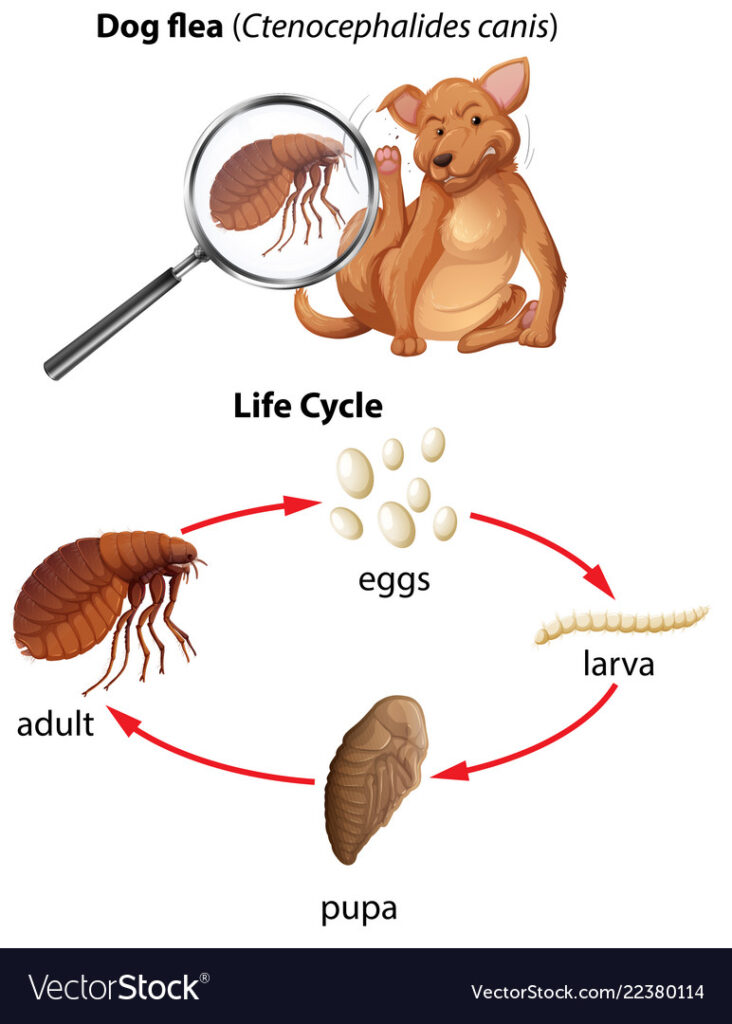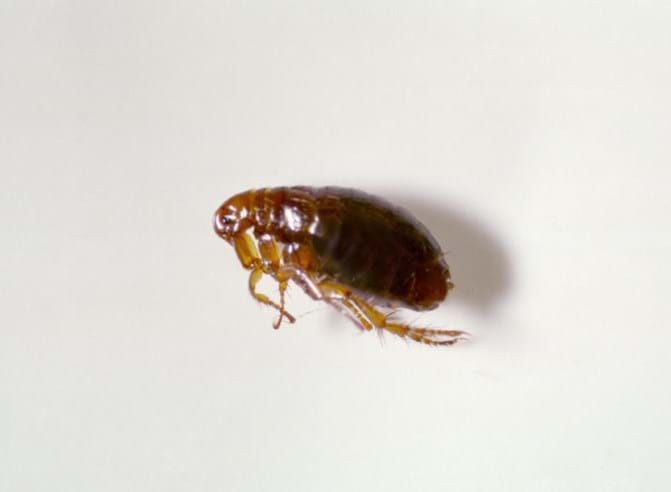Fleas are small, wingless parasites that feed on the blood of their host, and one of the most common species of fleas is the dog flea, scientific name Ctenocephalides canis. The dog flea is a species of flea that specifically targets dogs, but they can also infest other animals, including cats, humans, and other mammals.
The biology of dog fleas is quite interesting, and understanding it can help you to better prevent and treat flea infestations on your dog. Here are some of the key aspects of the biology of dog fleas:
Life Cycle:
The life cycle of a dog flea has four stages: egg, larva, pupa, and adult. Female fleas lay their eggs on the host animal, but the eggs fall off and hatch in the environment, typically in carpets, furniture, and bedding. The larvae then feed on organic debris and flea feces, eventually forming a pupa, which can remain dormant for months until environmental conditions are ideal for the flea to emerge as an adult.

Anatomy:
Dog fleas are small, flat-bodied insects that are approximately 1-3mm in length. They have six legs, with the hind legs being particularly well-adapted for jumping. Their bodies are covered in spines and bristles, which help them to cling to the host and prevent them from being dislodged.
Feeding Habits:
Dog fleas are ectoparasites, meaning that they feed on the blood of their host from the outside. They have specially adapted mouthparts that pierce the skin and suck blood. Fleas can consume up to 15 times their body weight in blood each day, and their bites can cause itching, irritation, and even allergic reactions in some dogs.

Prevention and Treatment:
Prevention and treatment of dog fleas are essential for maintaining your dog’s health and well-being. Preventive measures include regular grooming, using flea collars or topical treatments, vacuuming your home frequently, and washing your dog’s bedding regularly. Treatment options include flea baths, flea combs, and medications that kill fleas at different stages of their life cycle.
Conclusion:
In conclusion, the biology of dog fleas is fascinating and complex. Understanding their life cycle, anatomy, feeding habits, and prevention and treatment options can help you to better protect your dog from these pesky parasites. If you suspect that your dog has fleas, it is important to take action quickly to prevent the infestation from spreading and causing discomfort and health problems for your furry friend.
